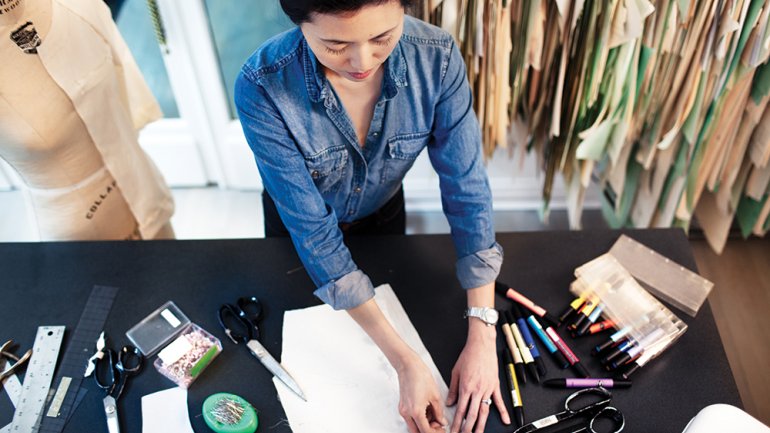Turn Style
Turn Style
If you appreciate craft, you may have an uneasy relationship with fashion. Craft revolves around the maker, and having some relationship with him or her is one of its joys. But fashion, as the business is practiced today, obscures the maker; more than 95 percent of the clothing Americans wear is made by anonymous workers overseas.
Craft values selectivity and buying for the long haul. It’s not about tossing out last year’s pants when another fad comes along. Fashion retailing relies on planned obsolescence and disposability: The average American throws away 70 pounds of clothing and textiles every year.
Craft wants people to make a living wage for working with their hands. But many Third World garment workers toil long hours for dismal pay. “Every single garment we wear is touched by at least 20 sets of hands,” says Bob Bland, founder of a novel New York-based fashion design and manufacturing hub, whom we talked to for this issue focused on wearables. “If 20 people were involved in the making of your $5 T-shirt,” Bland asks, “how much do you think they got paid?”
Even more alarming are the hazardous conditions for many garment workers around the world. Last year in Bangladesh, more than 1,100 workers making apparel for Walmart and Benetton were killed when a factory collapsed. In China, stories abound of political prisoners forced to make clothing and accessories for Western consumers.
As understanding grows about the hidden costs of what’s termed “fast fashion,” craft-conscious people are making different choices. Some are getting by on fewer, higher-quality pieces, which they have altered as styles change or mended when they wear out. One middle-class woman I know even had a fashionable customized “uniform” of interchangeable pieces made for her by a local designer, at a cost of several thousand dollars. Others reject the inherent disposability of fast fashion. Elizabeth Cline, author of Overdressed: The Shockingly High Cost of Cheap Fashion, still wears an H&M dress she’s had for eight years. “It’s not the greatest quality, but I still like it,” she says, “and I’m going to keep it in my closet and keep it going for as long as I can.”
Juliana Cho is one of five designers producing lines domestically whom we connected with for this issue. Her customers want “investment pieces to add to their wardrobes,” she says, not “trendy, mass-produced clothing they see in every magazine and store.”
Like their customers, the five designers we profiled are bucking the global trend. They’re making fashionable clothes in this country. And, significantly, they know and value the people producing their apparel. As designer Chris Sutton says of the people who make his jeans, “They are doing the most important work, and we see them as full members of our team.”
Perhaps the most constructive thing we can do as consumers is to think through each garment purchase. Do you love it? Will you still wear it a year from now? In craft terms, is it useful or beautiful – or ideally, both? Low prices, made possible by low wages, encourage us to buy more – and inevitably buy things we are less likely to actually wear and value. I’ve purchased on a whim and regretted it many times over the years, but I do have a basic black wool sweater I bought 25 years ago and still prize. I’ll be buying more for keeps going forward.
Fast fashion can seem like a juggernaut. But if we craft-minded souls refuse to play along, we can do our part to change the world.




